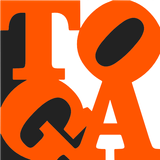Introduction to fountain pen filling systems
Are you unsure of the difference between a piston filling fountain pen and a vacuum filler? Should you use cartridges or a converter? This guide will help you to learn about the 5 main filling systems you're likely to come across in modern fountain pens.

If you're new to fountain pens, you may be confused by the variety of different filling systems available. Some take disposable cartridges, but others are self-filling and can be used with bottled ink. There are 5 main types that you'll see in modern fountain pens:
- Cartridges
- Converters
- Piston fillers
- Vacuum fillers
- Eyedroppers
Let's take a look at them!
Cartridges

The most common starting point for fountain pens are cartridges. They're arguably the most convenient filling system, as it's easy to carry a bunch of spare cartridges with you should you run out of ink on the go. The main downside is that your choice of colour is significantly restricted. It's possible to refill empty ink cartridges using a blunt syringe & bottled ink, but you lose the convenience factor as they generally can't be resealed.
Not every cartridge is compatible with every pen, so make sure to check before you buy. Standard International short cartridges are the most common, but some brands use their own proprietary cartridges, like Parker, Waterman, Lamy, and most Japanese brands. In those cases, you can generally only use cartridges from that brand, although you can find 3rd party cartridges for some, like Parker & Lamy. Additionally, some manufacturers like Platinum sell adapters that allow you to use Standard International cartridges in their pens instead of their own proprietary cartridges. Goulet pens has a useful list of what many popular brands use here.
Converters

Converters can be used in the majority of pens that accept cartridges (you'll often see them listed as "c/c" or Cartridge/Converter), and are arguably the most popular filling system. They allow you to make use of the nigh-unlimited number of bottled inks without having to use a blunt syringe. The majority of converters work on the same principle as piston fillers, but on a smaller scale. You twist a knob at the back which draws ink up into the converter. There are other styles like Kaweco's mini converter where you push & pull the piston instead of twist, aerometric converters like Pilot's CON-20 where you press & release a bar to pull ink into a sac, or the CON-70 where you push a button to pump ink into it. Some converters give you more capacity than others, and—like cartridges—they're not universal. There are also a few companies like Lamy & Pilot who have multiple different converters, some of which don't fit in every model, so double check before ordering.
Piston Fillers

One of the biggest downsides to cartridges & converters is their limited ink capacity. Piston fillers improve this issue by building the ink system into the pen itself. This is a robust system that you'll find on pens at every price range, from high-end pens like the Montblanc 149 to more budget pens like the Wing Sung 698. You can think of these as being like a giant converter with a nib attached. You adjust the piston by turning a knob at the back of the pen, known as the blind cap. Sometimes this knob will be under an actual cap, but most of the time the knob will be the end of the pen itself. You'll get the best fill by emptying & filling the pen 2-3 times.
Vacuum Fillers

This is probably the most fun filling system. Who wouldn't want to recreate the cold, black vacuum of space inside of your pen to suck up ink? This type has the largest ink capacity of all the self-filling systems. They have a metal rod running from the blind cap through the centre of the pen to a rubber stopper between the section & barrel. To fill the pen, you unscrew the blind cap and pull it all the way up. As you push back down, pressure builds up until it reaches the bottom where the pressure is released, creating a vacuum that sucks ink up into the barrel. Much like the piston filler, you'll generally want to do this 2-3 times to get a full fill. When writing with the pen for more than a few lines, you need to unscrew the blind cap a little to unseal the stopper and allow the ink to flow. This stopper has the added benefit of helping to avoid any leakage from pressure changes, which makes it ideal for plane travel.
Eyedroppers

But what if you need the absolute maximum amount of ink capacity possible? That's where eyedroppers come in. This is the oldest & simplest filling system still in use today. All you do is fill the body of the pen with ink using an eyedropper (hence the name), and you're good to go! These days it's easier & faster to fill them with a blunt syringe, but the name remains. There are some downsides to this filling method, the largest being that changes in pressure or knocks & bumps can cause the ink to evacuate, and because they hold so much ink it can be quite the mess. Some versions, known as Japanese Eyedroppers, get around this potential hazard by having a stopper between the section & body that prevents any accidents from causing all the ink to be expelled. It works in the same way as the stopper in vacuum fillers, just without the vacuum part. That being said, as long as you're careful with them they're perfectly safe to use. Some cartridge/converter pens like the Platinum Preppy can be converted to eyedroppers by adding an o-ring & pure silicone grease around the threads, but be sure to research carefully before trying it with any of your pens.
So these are the 5 main filling systems you'll come across in modern fountain pens. Which one is your favourite? There are many other systems in use today—like bulk fillers, captured converters, even the odd lever filler—but you're not likely to come across them until you're a bit deeper into the fountain pen rabbit hole. If you have any questions, please feel free to leave us a message in the comments, or use the #FountainPen hashtag on Mastodon. If you're new to Mastodon, feel free to join us at Penfount.social! You can also find more information on these filling systems, along with directions on how to fill each of them on the JetPens website here.




